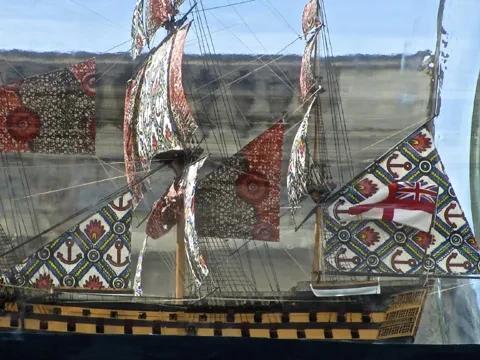
Essential information
| Location | |
|---|---|
| Key Stage | Key Stage 2 |
| School Subject | Art, Geography, History |
| Resource Type |
Classroom activity
|
These resources support KS2 students to explore the artwork ‘Nelson’s Ship in a Bottle’ by Yinka Shonibare CBE. The information, images and videos can be incorporated into lessons linked to the following themes: Migration, Citizenship, Black Histories, Art and Design.
Artist Profile
Yinka Shonibare CBE was born in London and moved to Lagos in Nigeria when he was 3.
He returned to London to study fine art and today he is an internationally renowned artist and has exhibited his work all over the world.
He uses lots of different media to create his work including painting, sculpture, photography, film and performance.
What does Yinka Shonibare say about ‘Nelson’s Ship in a Bottle’?
‘For me, it’s a celebration of London’s immense ethnic wealth, giving expression to and honouring the many cultures and ethnicities that are still breathing precious wind into the sails of the United Kingdom.’
Explore below to find out all about ‘Nelson’s Ship in a Bottle’.
Watch a film about the artwork

Learn how to create your own pattern
- Choose three colours.
- Think of a symbol or set of symbols to include in your pattern. These could be objects or shapes that show your interests or personality.
- Create a square or a diamond with your shapes, symbols and colours.
- A pattern is a repeating design so repeat your square or diamond.















